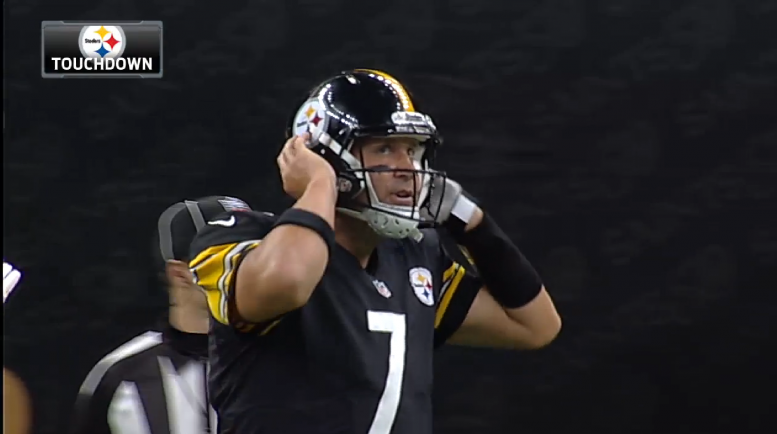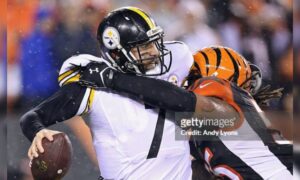The topic of the play-action pass has been a source of discussion over the course of the past couple of days as a result of a pair of articles that I have written on the matter as it pertains to the Pittsburgh Steelers and how quarterback Ben Roethlisberger has fared in this field in recent history.
One of the points of order that I wanted to address, however, was the idea that Roethlisberger’s reduced numbers could be a reflection of the fact that his depth of target is greater on passes off of play-action than without. The problem is that this is the case for the vast majority of quarterbacks, and is largely reflected in the improved yards per pass attempt figures that go along with it.
Take a 2014 article from Pro Football Focus that looks at the play-action performances of all quarterbacks during the 2013 season and compares them to their passes outside of play-action. This is a fitting year to look at because it was early in Todd Haley‘s tenure with the Steelers as offensive coordinator.
According to their numbers, it is true that Roethlisberger had among the highest depths of target of all quarterbacks, though not the highest. At 12.3 yards per pass attempt, he tied for the sixth-deepest depth of target on play-action passes.
But the numbers also reflect the basic fact that most quarterbacks tend to throw deeper passes when they utilize play action. This is one of the preferred features of play action, since its usage has the intended effect of drawing in the defense closer to the line of scrimmage and coaxing the cornerbacks to peak into the backfield. As a result, the aim is often to be able to throw over their heads.
According to their charting, the average depth of target on passes without play action during the 2013 season was 8.4 yards. With play action, it was 10.4 yards, which is an increase of a full two yards, and a significant increase by percentage.
Roethlisberger’s discrepancy was greater than the average, going from 8.1 yards to 12.3. I didn’t work out the difference of all figures, but this did appear to be among the very most significant differences, even if his depth of target off of play action was not the deepest. Mike Glennon was among the few with a wider gap.
It should be worth noting some other numbers comparing passes off of play action versus those without it. Interestingly, interception rates in 2013 dropped with play action, while touchdown rates saw a statistically significant increase.
Yards per attempt climbed from 6.8 to 8.4 while completion percentage remained close to constant. Yards per completion also rose a notable amount. Quarterback rating climbed from 83 to 97.2. And it’s notable that Roethlisberger was average to below average in almost every category that year.








